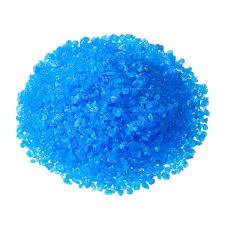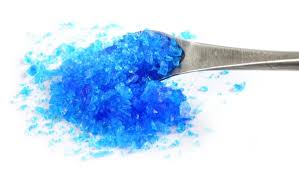Key chemicals to prevent and treat fish diseases Part 2
- Formalin is the commercial name for a 35 to 40 percent solution of formaldehyde gas in water. Avoid solutions containing methanol. Formalin is toxic to fish particularly in soft water (Section 5). As it lowers dissolved oxygen levels, make sure treatment water is well oxygenated. Toxic and irritant for the eyes and lungs, it should be handled very carefully in a well-aerated place. It is very sensitive to light so should be stored in a dark bottle. Always check to see if there is a white deposit at the bottom of the bottle. In such cases, before use, carefully filter out this highly toxic deposit of paraformaldehyde. Keep formalin away from metallic equipment. Remember when determining how much to use that it is considered to be a 100 percent Al chemical.
- Malachite green is sold either as a blue-green to green crystalline powder or as a solution of various strengths. You should use the medical-grade, zinc- free quality to avoid heavy fish losses. Do not use in the presence of zinc or iron. Handle carefully and avoid any contact with your skin. If possible, use a trial batch, as quality and toxicity may vary greatly from one batch to another. Not to be used on food fish.
- Note: in warm climates, it is safer to use a low dosage mixture of formalin and malachite green, called the Lateux-Meyer mixture. These two chemicals may be mixed and stored together before use.
READ ALSO: Key chemicals to prevent and treat fish diseases Part 1
- Potassium permanganate is a violet, crystallized powder. It is a good disinfectant in the absence of organic materials that destroy it. When in solution, it should be kept in a dark bottle.
- Copper sulphate is sold as a light-blue powder which readily dissolves in water; blue crystals are also common, but they should be small enough to be easily soluble; it is relatively cheap, but is highly toxic for humans and fish. It should be stored safely and handled properly
- Agricultural insecticides are usually organophosphates and are sold under various trade names such as Bromex, Dipterex, Dylox, Flibol, Masoten and Neguvon. Carefully check the percentage of active ingredients present. They are often very toxic for various other aquatic organisms including zooplankton and for humans and domestic animals. In ponds, they normally decompose within a few days. Toxicity to disease organisms is often reduced when water temperature exceeds 30 C
- From WORLD FARMERS CENTRE
P.S.
Dear Farmer, you can join my newly formed WORLD FARMERS CENTRE WhatsApp group to get more value from me and interact with other farmers. As soon as you join, I will send a FREE digital copy of our popular magazine FARMING ADVICE DIGEST to you. YOU CAN JOIN HERE
YOU CAN ALSO WATCH, LIKE AND SUBSCRIBE TO MY SUCCESS IN FARMING TV CHANNEL HERE
-Advertisement-
 Learn More
Learn More
 Learn More
Learn More















